This article was medically reviewed by Janice Litza, MD. Dr. Litza is a board certified Family Medicine Physician in Wisconsin. She is a practicing Physician and taught as a Clinical Professor for 13 years, after receiving her MD from the University of Wisconsin-Madison School of Medicine and Public Health in 1998.
There are 28 references cited in this article, which can be found at the bottom of the page.
This article has been viewed 168,242 times.
Psoriasis is a common skin condition in which the life cycle of skin cells is disrupted. Cells end up piling up on top of one another, resulting in patches, scales, discomfort, and sometimes pain on the skin. In addition to a variety of medical treatments, day-to-day lifestyle changes can help alleviate symptoms of psoriasis.
Steps
Using Topical Treatments
-
1Try topical corticosteroids. Topical corticosteroids are usually the first treatment recommended for psoriasis. If used correctly, they can be quite effective.[1]
- Corticosteroids come in a variety of types. There are sprays, creams, gels, ointments, solutions, and foams. The type you choose depends on personal preference, as well as location of the psoriasis (e.g., use a liquid for psoriasis on the scalp), but if you're concerned about choosing the right brand talk to your doctor.[2]
- Strengths vary. Ideally, you should use stronger types on tough areas like elbows and knees and use a lighter variety on your face and underarms.
- Creams are usually applied once or twice a day, but you should limit your use of stronger steroids. Overuse can cause rashes and permanent skin thinning and other damages.[3]
-
2Purchase salicylic acid at a drugstore. Salicylic acid is a topical cream available at most drug stores and supermarkets. If corticosteroids are not improving symptoms to your liking you could try adding salicylic acid to your skin care regimen.[4]
- Salicylic acid prevents scaling and other rash-like symptoms. You do not need a prescription to buy salicylic acid but you should consult your doctor before adding any additional creams, especially if you are taking other medications.
- Salicylic acid is often combined with corticosteroids and other treatment options.
Advertisement -
3Use coal tar. Coal tar is a black petroleum byproduct that is one of the oldest treatment options for psoriasis.[5]
- Coal tar comes in a variety of forms. You can get coal tar infused shampoo, bath wash, and creams.[6]
- Coal tar reduces skin flakiness and also reduces the appearance of psoriasis.
- Coal tar's main drawback is that it is very messy. It can stain clothing, furniture, and carpeting and also has a strong, pungent odor.[7]
-
4Try Vitamin D analogues. Vitamin D analogues are synthetic forms of vitamin D. You generally need a prescription for analogues, so you should talk to your doctor if it's something you're interested in trying.[8]
- Calcipotriene (Dovonex) is the most widely prescribed cream that contains vitamin D. It is used alone or in conjunction with other treatment options.
- The main drawback is potential skin irritation, which can worsen existing psoriasis. Unfortunately, Vitamin D analogues do not work for everyone. Ask your doctor if these would be helpful for you.[9]
-
5Get a prescription for anthralin. Anthralin is a medication that normalizes DNA activity in skin cells, which can lead to a reduction of psoriasis. It comes in cream form.[10]
- Anthralin has been known to remove scales for some patients, resulting in smoother skin.
- Unfortunately, anthralin has drawbacks. It can cause skin irritation and stains anything it touches, including hard surfaces like countertops. If you use anthralin, you should only leave it on for a short period of time before wiping it off.[11]
-
6Try topical retinoids. Topical retinoids are often used to treat acne or skin damaged by the sun but can be successfully used to treat psoriasis as well.[12]
- Retinoids decrease inflammation by normalizing DNA activity in the skin. This can help with symptoms of psoriasis.
- Sensitivity to the sun is a common side effect of retinoids. You should be sure to use sunscreen while taking topical retinoids.[13]
- Retinoids are not recommended for women who are pregnant or breastfeeding.[14]
Trying Oral and Injected Medications
-
1Use oral retinoids. Retinoids also come in oral form and, due to the medication's relation to Vitamin A, they can reduce the production of skin cells. This helps slow the scaling and flaking associated with psoriasis.[15]
- Usually, oral retinoids are prescribed if your psoriasis does not respond to other treatment options. The main downside is that symptoms of psoriasis often return when treatment ceases.
- Hair loss and lip inflammation may occur while on oral retinoids. Women who are pregnant or breastfeeding should not take oral retinoids as they can cause severe birth defects.
-
2Try methotrexate. Methotrexate tablets help reduce psoriasis by decreasing skin cell production. They also reduce inflammation.[16]
- In low doses, most patients experience minimal side effects on methotrexate. An upside to the medication is that it can stall psoriatic arthritis in some patients.[17]
- Side effects may include upset stomach, fatigue, and loss of appetite. Longterm use is not recommended, however, as severe side effects such as liver damage and decreased production of red and white blood cells can occur if the medication is used too long.[18]
- Topical application of liposomal methotrexate hydrogel is scientifically proven to be quite effective compared to conventional medication.
-
3Ask a doctor about skin injections. As many oral medication carry heavy risk of side effects and cannot be used long term, injections might be an option if your psoriasis does not respond to other treatments.[19]
- Enbrel, infliximab (Remicade), adalimumab (Humira) and ustekinumab (Stelara) are all given by intravenous, subcutaneous, or intramuscular injection. Usually, your doctor will only recommend such procedures if your psoriasis does not respond to other therapies and is causing arthritis.[20]
- Biologically, such treatments should block interaction between certain cells in order to reduce skin inflammation.
- If you are taking these medications, you will probably be screened for tuberculosis as the meds have a strong effect on the immune system. They are usually a last resort effort and should only be used with extreme caution and under supervision of a doctor.[21]
Using Light Therapy
-
1Get more exposure to sunlight. UV rays emitted by the sun kill T-cells in the skin. This slows the turnover of skin cells, which can reduce the flaking associated with psoriasis. This is why therapy using UV lights can be a great way to combat psoriasis.[22]
- Regular exposure to small amounts of sunlight can help with psoriasis. If you live in a sunny area, light therapy can begin with natural light.[23]
- Talk to your doctor before you add natural sunlight exposure to your skin care regimen. She should be able to tell you the safest way to get sunlight given your skin condition and medical history.[24]
-
2Look into UVB phototherapy. UVB phototherapy involves exposure to UV lights through an artificial light source.[25]
- This is an excellent choice if you only need to treat specific patches of skin. You can talk to a doctor or dermatologist about where and how to get UVB phototherapy in your area.
- Narrow band UVB therapy is a type of UVB phototherapy in which smaller beams of light treat specific areas of your skin. Treatment is usually administered two to three times a week. The downside is that burning and irritation may be more severe with narrow band therapy.
- Goeckerman therapy is a treatment option that combines UVB therapy with coal treatments. As coal makes skin more receptive to UVB light, using the treatment options together boosts the effectiveness of both.[26]
-
3Try excimer lenses. An excimer laser is type of laser than can focus UVB lights on only affected skin. It requires fewer sessions than other forms of light therapy and another upside is that healthy patches of skin surrounding psoriasis are generally unharmed. However, some redness and blistering does occur in some patients.[27]
Making Lifestyle Changes
-
1Bathe daily. Taking a warm bath every day can help with psoriasis by washing out flakes and scales.[28]
- For added help, add colloidal oatmeal, Epsom salts, or Dead Sea salts to the water as these have properties that help soothe and moisturize skin.
- Keep water lukewarm and don't use harsh soap. Both can irritate skin. Strive for lukewarm water and milder soaps.
-
2Apply moisturizers. Use moisturizers on your skin to prevent dryness. Moisturizers will help relieve the itchiness, redness, and roughness caused by psoriasis.[29]
- Put moisturizers on right after you shower when your skin is still moist from bathing; this helps lock in the moisture.
- Avoid heavily scented moisturizers, as these can sometimes irritate psoriasis.
-
3Drink less alcohol. For some people, drinking alcohol can reduce the effectiveness of treatments for psoriasis.[30]
- Talk to your doctor about any medications you are on to see if it's safe to drink on your meds.
- If you go to an event where people are drinking, it might help to bring a non-alcoholic beverage you enjoy, like a soda, juice, or tea. This way, you can still feel like you're indulging yourself without compromising your psoriasis treatment.
- Explain to friends and family members why you need to avoid alcohol. If you're a social drinker, and feel tempted to indulge when going out, having support from your friends can help you abstain from drinking.
-
4Try herbs and nutritional supplements. If medical fixes aren't quite working for you, you can try homeopathic options like herbs and nutritional supplements. These can have a positive effect on psoriasis for some people.[31]
- Fish oil, which can be purchased at most health food stores or supermarkets, have helped relieve psoriasis symptoms for some. Studies have been mixed on its effectiveness and generally show that while it reduces itching and flaking it might not reduce the size of skin patches. If you're willing to try fish oil, talk to your doctor first as it can interact poorly with some medications in high doses.
- Folic acid can be taken in pill form. It reduces symptoms of psoriasis for some, but you should talk to your doctor before adding either to your care regimen.
- Herbs, like Oregon grape cream, avocado and Vitamin B12 creams, aloe vera, and oregano oil can sometimes treat symptoms of psoriasis if used in moderation. Use them according to instructions on the package. With oregano oil, you should always dilute it with water or juice. It should not be used if you're pregnant as it can potentially cause miscarriage.[32]
-
5Eat an anti-inflammatory diet. Some people notice a reduction in psoriasis by changing their diet. Eating a balanced diet that is primarily made up of healthy fats, fresh produce, whole grains, and lean proteins is considered an anti-inflammatory diet.[33]
- Coldwater fish, such as salmon, lake trout, albacore tuna, mackerel, and herring are good sources of Omega-3 fatty acids.
- Olive oil, walnuts, flaxseeds, and pumpkin seeds are good plant sources of Omega-3s.
- Eat fruits and vegetables that are all colors of the rainbow, such as carrots, strawberries, squash, mangoes, kale, spinach, and blueberries.
Expert Q&A
-
QuestionIs psoriasis contagious?
 Janice Litza, MDDr. Litza is a board certified Family Medicine Physician in Wisconsin. She is a practicing Physician and taught as a Clinical Professor for 13 years, after receiving her MD from the University of Wisconsin-Madison School of Medicine and Public Health in 1998.
Janice Litza, MDDr. Litza is a board certified Family Medicine Physician in Wisconsin. She is a practicing Physician and taught as a Clinical Professor for 13 years, after receiving her MD from the University of Wisconsin-Madison School of Medicine and Public Health in 1998.
Board Certified Family Medicine Physician No, psoriasis is not a contagious illness or disease. It is a chronic skin condition.
No, psoriasis is not a contagious illness or disease. It is a chronic skin condition.
Warnings
- You may have geographic tongue if you have psoriasis. Managing your psoriasis can help prevent this condition in many cases, however.⧼thumbs_response⧽
References
- ↑ https://www.aad.org/public/diseases/psoriasis/treatment/medications/corticosteroids
- ↑ https://www.aafp.org/afp/1999/0215/p957.html
- ↑ https://www.ncbi.nlm.nih.gov/pmc/articles/PMC4228634/
- ↑ https://www.psoriasis.org/over-the-counter/
- ↑ https://www.psoriasis.org/over-the-counter/
- ↑ https://www.aad.org/public/diseases/psoriasis/treatment/medications/coal-tar
- ↑ https://www.aad.org/public/diseases/psoriasis/treatment/medications/coal-tar
- ↑ https://emedicine.medscape.com/article/1943419-medication#6
- ↑ https://pubmed.ncbi.nlm.nih.gov/20517536/
- ↑ https://www.psoriasis.org/non-steroidal/
- ↑ https://www.ncbi.nlm.nih.gov/pmc/articles/PMC5518573/
- ↑ https://www.aad.org/public/diseases/psoriasis/treatment/medications/retinoid
- ↑ https://www.psoriasis.org/soriatane-acitretin/
- ↑ https://www.aad.org/public/diseases/psoriasis/treatment/medications/retinoid
- ↑ https://www.aad.org/public/diseases/psoriasis/treatment/medications/oral-retinoids
- ↑ https://www.aad.org/public/diseases/psoriasis/treatment/medications/methotrexate
- ↑ https://www.aad.org/public/diseases/psoriasis/treatment/medications/methotrexate
- ↑ https://www.psoriasis.org/methotrexate/
- ↑ https://www.nhs.uk/conditions/psoriasis/treatment/
- ↑ https://www.psoriasis.org/biologics/
- ↑ https://www.aad.org/public/diseases/psoriasis/treatment/medications/biologics
- ↑ https://myhealth.alberta.ca/Health/aftercareinformation/pages/conditions.aspx?hwid=uf8107
- ↑ https://medlineplus.gov/ency/article/000434.htm
- ↑ https://www.psoriasis.org/phototherapy/
- ↑ https://www.psoriasis.org/phototherapy/
- ↑ https://www.ncbi.nlm.nih.gov/pmc/articles/PMC3735239/
- ↑ https://emedicine.medscape.com/article/1943419-guidelines#g4
- ↑ https://www.aad.org/public/diseases/psoriasis/skin-care/baths-showers
- ↑ https://www.aad.org/public/diseases/psoriasis/treatment/medications/non-prescription
- ↑ https://www.hopkinsmedicine.org/health/conditions-and-diseases/psoriasis-diet-foods-to-eat-and-avoid-if-you-have-psoriasis
- ↑ https://www.hopkinsmedicine.org/health/conditions-and-diseases/psoriasis-diet-foods-to-eat-and-avoid-if-you-have-psoriasis
- ↑ https://medlineplus.gov/druginfo/natural/644.html
- ↑ https://health.clevelandclinic.org/psoriasis-diet/
About This Article
To get rid of psoriasis, start by applying an over-the-counter topical corticosteroid or salicylic acid cream to the affected area. You can also see a dermatologist for stronger topical treatments like retinoids, anthralin, and vitamin D analogues, and unresponsive psoriasis may benefit from doctor-administered skin injections. To prevent future flare ups, take a warm bath every day, apply moisturizer regularly, and consider following an anti-inflammatory diet made up primarily of healthy fats, fresh produce, whole grains, and lean proteins. For tips on using over-the-counter supplements to treat psoriasis, read on!




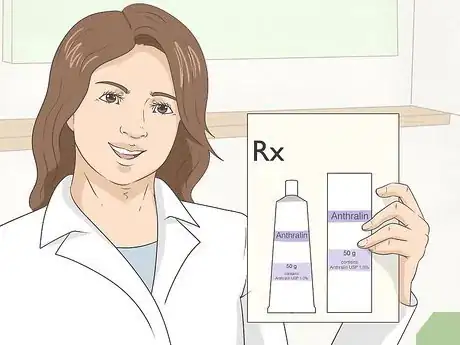


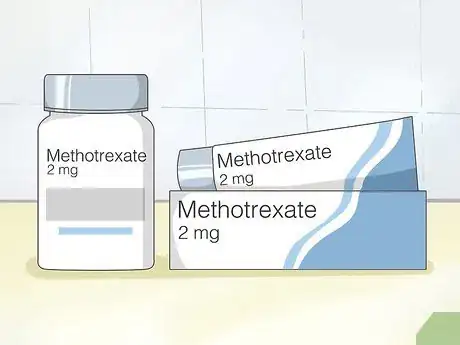





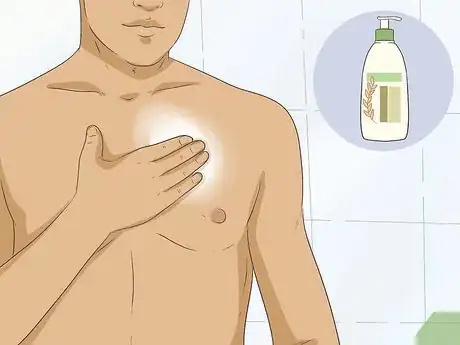
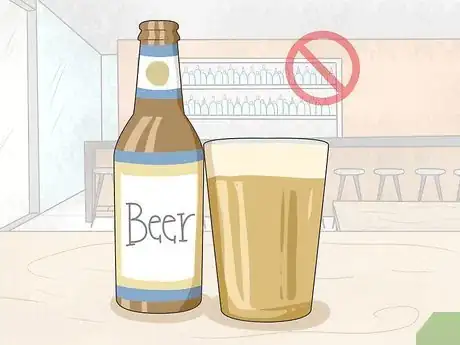
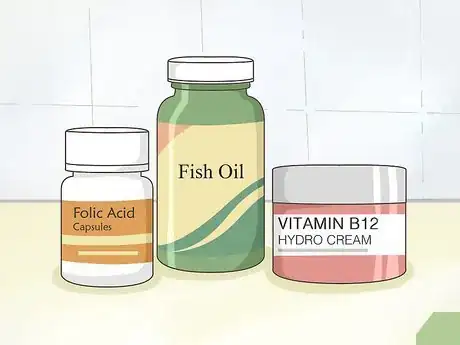


-Step-17.webp)


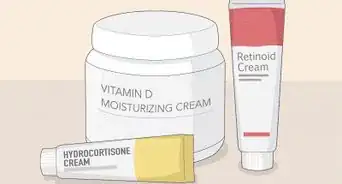

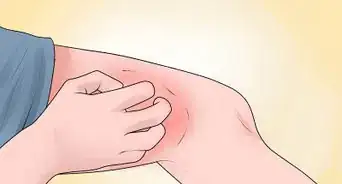




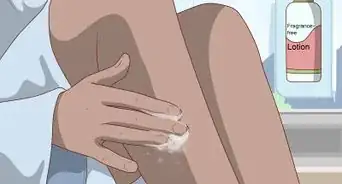









-Step-17.webp)





































Medical Disclaimer
The content of this article is not intended to be a substitute for professional medical advice, examination, diagnosis, or treatment. You should always contact your doctor or other qualified healthcare professional before starting, changing, or stopping any kind of health treatment.
Read More...